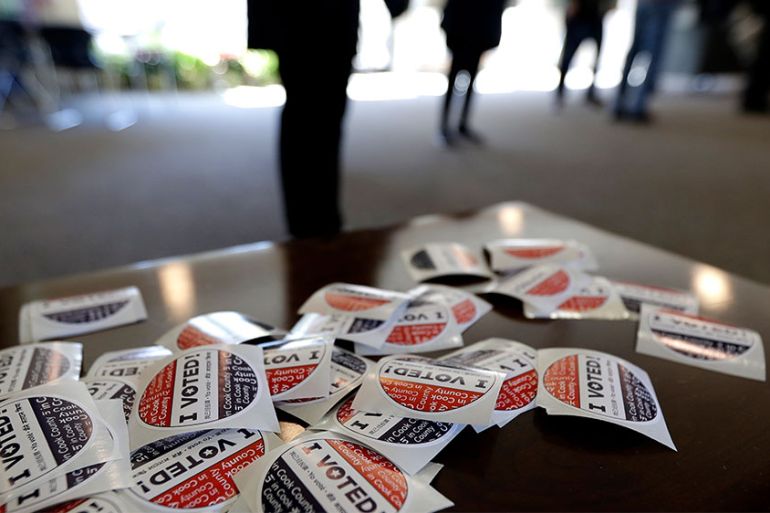Online hoaxes about US plans for mail-in voting spread quickly
Egged on by Trump, social media users push conspiracy theories about plans to change voting because of coronavirus.

A bitterly partisan debate unfolding on whether more voters in the United States should cast their votes through the mail during the coronavirus pandemic is provoking online disinformation and conspiracy theories that could undermine trust in the results, analysts believe, even if there are no major problems.
With social-distancing guidelines possibly curtailing in-person voting at the polls in November, states are drawing up plans to rely more heavily on a mail-in system that has until now seen only limited use.
Keep reading
list of 3 itemsUS Congress gives final approval on $484bn relief package
Could the oil price crisis radically redefine US-Saudi relations?
Historically, there is no evidence of widespread voter fraud through mail-in voting. But social media users are already pushing theories casting doubt on the method. US President Donald Trump has encouraged the scepticism, saying during a televised briefing that “a lot of people cheat with mail-in voting” and repeatedly tweeting about elections being “rigged” by the process.
Officials in Trump’s Justice Department say they are concerned that foreign adversaries could exploit any vulnerabilities in the vote-by-mail process, especially since even minor tampering could trigger widespread doubts about the integrity of the vote.
“Is it possible, in particular for a foreign actor, to cause enough mischief in the vote-by-mail process to raise a question in the minds of Americans, particularly Americans perhaps whose candidate has lost, that somehow the result of this election is unfair?” Assistant Attorney General John Demers, the department’s top national security official, said in describing a key question confronting law enforcement.
Republicans should fight very hard when it comes to state wide mail-in voting. Democrats are clamoring for it. Tremendous potential for voter fraud, and for whatever reason, doesn’t work out well for Republicans. @foxandfriends
— Donald J. Trump (@realDonaldTrump) April 8, 2020
Several disinformation experts said they have not found evidence yet that foreign actors are covertly pushing a false narrative about mail-in voting.
But a sham social media campaign that feeds existing doubts about the US election process would align with the Kremlin’s playbook, said Bret Schafer, a media and digital disinformation fellow at the Alliance for Securing Democracy, a Washington, DC think-tank. During the 2016 election, Russia-linked groups polluted US voters’ social media feeds with messages about hot-button topics like race relations, gun laws and immigration.
“You don’t have to hack the vote to hack people’s perception of the vulnerability of the vote,” he said. “All you need to do is to seed enough doubt about the legitimacy of a vote.”
Only five US states currently conduct mail-in voting, where a ballot is automatically mailed to every eligible voter.
To make mail-in voting work, the remaining states would have to make major changes to their voting and tabulating systems in less than six months. Any last-minute changes could spur unsubstantiated claims about rampant voter fraud, an unsupported theory that Trump and some of his supporters have already pushed for years.
|
|
Conspiracy theories that Democrats are hyping the coronavirus pandemic to push for mail-in voting or that forecasts of a second wave of infections are part of a ploy to cancel an in-person vote have received thousands of likes, retweets and shares on Facebook, Twitter and Reddit. The theories are popular in dozens of Facebook groups that have been created in recent weeks to protest governors’ stay-at-home orders.
Negative chatter around mail-in ballots spiked in those Facebook groups after House Speaker Nancy Pelosi proposed expanding early voting and mail-in voting last month, said Madelyn Webb, a research reporter for First Draft News, an organisation that tracks disinformation.
One popular meme accused Democrats of extending the quarantine to push “mail in ballots so they can cheat”. The image received a combined 90,000 likes, comments and shares, mostly on pro-Trump and conservative Facebook pages.
